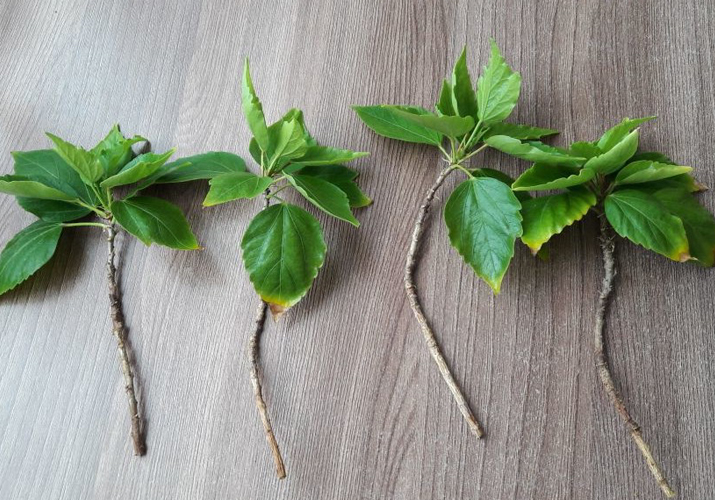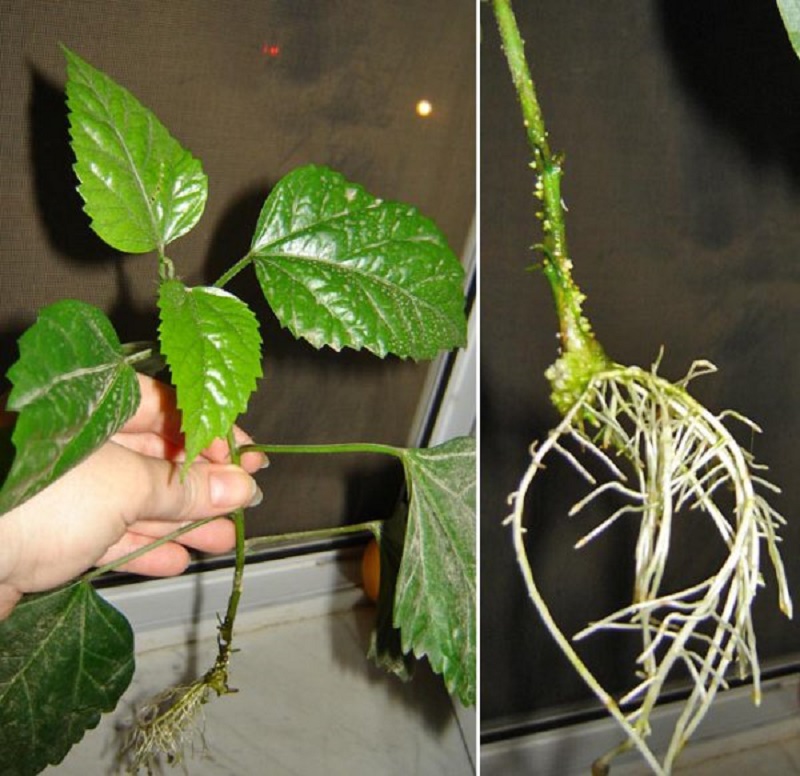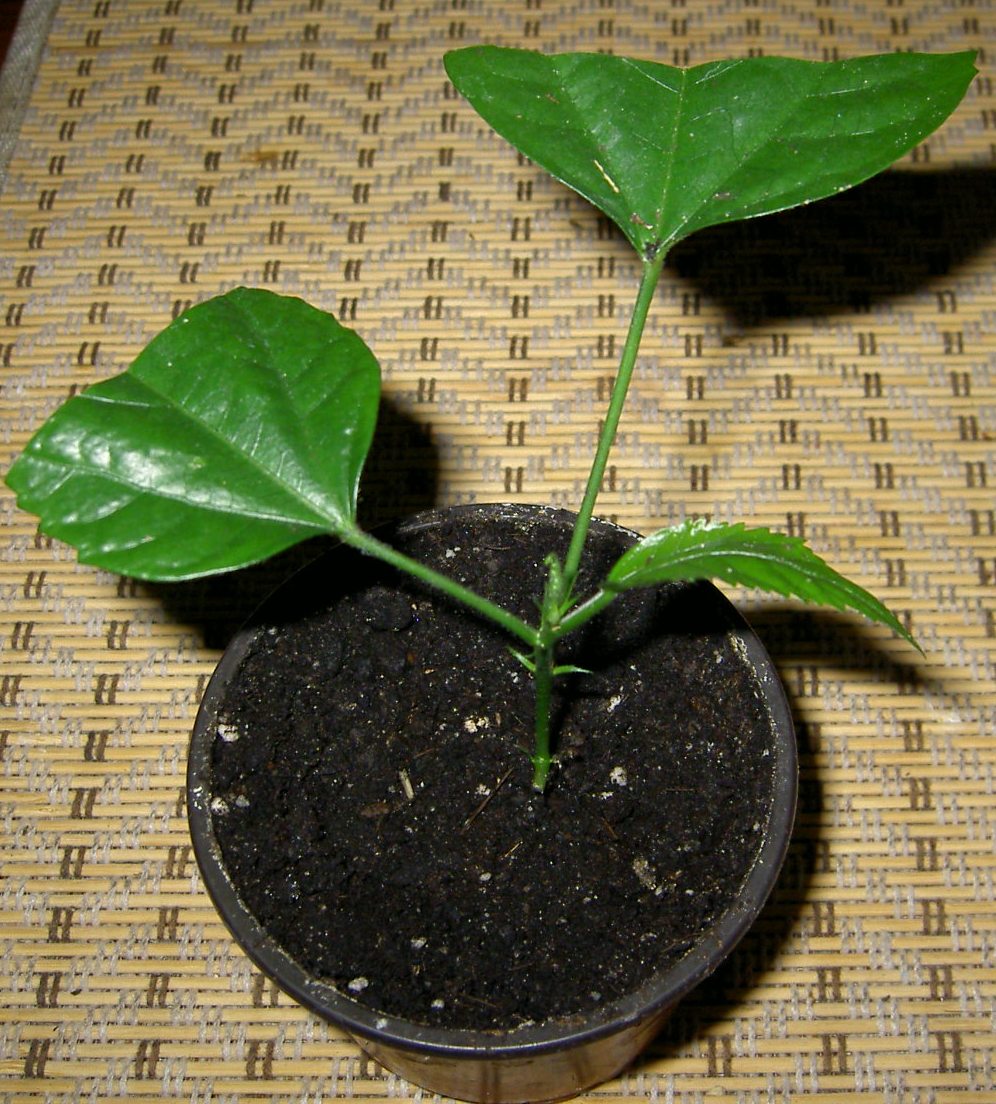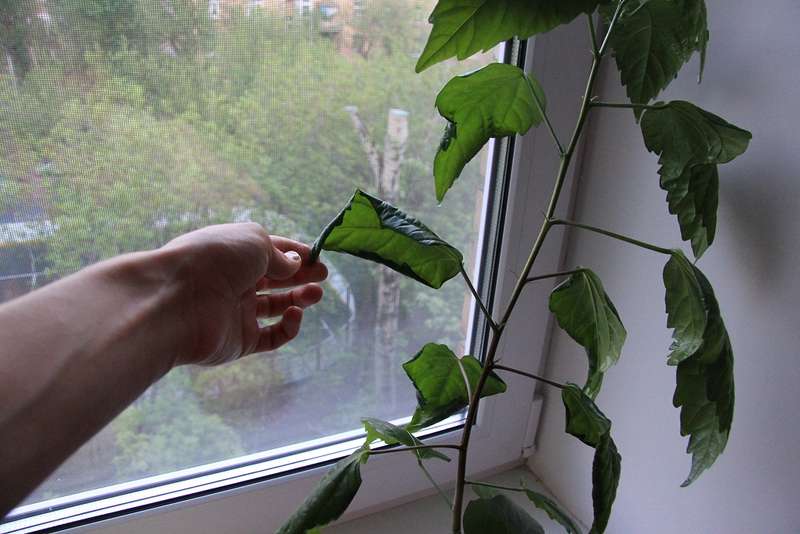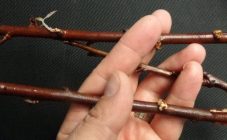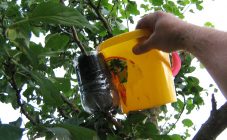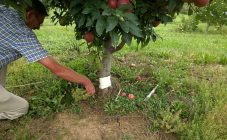Content:
The genus Hibiscus includes many varieties of trees, shrubs and even grasses. In culture, the most famous are the numerous varieties of the so-called "Chinese rose", a perennial shrub that feels great in gardens in the south, as well as in indoor and greenhouse conditions. The Syrian species is less common, but also very beautiful. Herbaceous hibiscus is found in gardens as annual and perennial.
The plant is native to Southeast Asia and today is distributed throughout the world. It grows quickly at home, does not require complex care, how hibiscus reproduces is well known. As it grows, the bush forms a lush crown. Indoor evergreen grows up to 1.2 m in height. With proper care, it blooms with huge flowers up to 12 cm in diameter. There are all kinds of shades of flowering, lasting from early spring to late autumn, and the leaves are always saturated green (sometimes variegated) color, pointed in shape.
Breeding methods of hibiscus
Having an adult plant at home, it can be propagated if desired in 3 ways:
- seeds;
- cuttings;
- dividing the rhizome.
The first option is the longest. You will need to get seeds, and then plant them and carefully care for young seedlings, providing them with greenhouse conditions. However, this method is used to obtain plants with flowers of rare shades. If there are several varieties of Chinese roses in the house, and the owner knows how to root hibiscus, then nothing prevents you from trying your hand at breeding a new variety.
Cutting is the easiest way to get a completely identical large-flowered bush. It should be noted that young semi-lignified shoots are an excellent planting material for planting the mother bush in as many pots as needed. He willingly takes root and quickly starts to grow. This is how hibiscus is propagated for sale, since in the end it is possible to get strong seedlings, adapted to transportation and change of scenery. The secret is how to take a shoot from a hibiscus and root it.
It is possible to divide the rhizome only in an adult, well-grown bush. This is done 3-4 years after planting. In this case, 3-4 divisions are obtained from one hibiscus, which can be planted immediately. The optimal time for this procedure is early spring, when flowering is just about to resume.
How to propagate hibiscus by cuttings
The choice of planting material is very responsible. The thing is that the tree-like hibiscus is very much loved by numerous pests. There is always a risk, along with a new seedling, to bring home unwanted guests who can destroy a home greenhouse in a matter of weeks. It is worth buying planting material only in specialized stores, where flowers are necessarily treated with professional insecticidal agents.
You also need to look very closely at the condition of the seedling. A perfectly healthy bush will certainly have juicy, bright and shiny foliage.There should be no dark spots on the leaves and stems, as they always indicate the presence of one or another fungal disease. Carrying such a bush home is simply dangerous. Yellowing of the edges of the leaves, dry areas, stickiness - all these are unnatural signs, so such low-quality seedlings should be discarded immediately. The best option is to buy a hibiscus with a flower. This will allow you to verify the shade and decorative qualities of the bush. Let the flowers fade very quickly, but their beauty pays for everything.
Hibiscus: propagation by cuttings in water
Every fan of the Chinese rose knows how to root hibiscus from the cuttings. Within 3 summer months, the natural growth of hibiscus branches is 20 cm. To form the correct beautiful crown, it is required to shorten all regrown shoots by a third of the length. This formative pruning process produces many cuttings that are excellent for rooting.
A step-by-step scheme for rooting cuttings in water is as follows:
- For breeding, only ripe shoots are suitable, in which buds have formed and the bark has grown stronger. The optimal length of branches suitable for rooting is 8-12 cm. It is imperative to remove all the buds from them, as well as the lower foliage. Half of the remaining leaves are cut off with scissors. This technique reduces moisture evaporation and increases the chances of growing a new plant.
- The prepared planting material is placed in a container with water. 7 drops of epin per glass should be added to the water to speed up root growth. To create optimal humidity, the stalk, together with the container, is placed under a hood or covered with a plastic bag. If the conditions are appropriate, then the rudiments of the rhizome will be noticeable after 7 days. To sustain the cutting before planting should be 1 month to form a strong lump of roots.
- For transplanting into the ground, it is required to prepare a soil mixture. Normal garden soil with a neutral acid-base reaction will do. To improve aeration, a small amount of clean river sand is added to it. If you set yourself the goal of preparing an ideal soil, then its composition should be as follows: 2 parts each of leafy and soddy soil with humus plus 1 part of sand. At the bottom of the planting container, a layer of expanded clay is laid out for drainage or other suitable material - broken brick, pebbles, chipped ceramics, etc.
- The optimal planting capacity for a cutting that has just started root roots is a ceramic pot with a diameter of up to 9 cm. It is very important when planting to gently straighten the roots without breaking them.
- For the next 2 months, the pot should be in a warm and well-lit place. The lower temperature limit is 10 ° C, and the upper one is 30 ° C, at the crossing of which the bush drops foliage. If there is not enough light, the effect will be the same.
- A week after planting, the tip of the shoot must be pinched. This will allow the bush to immediately direct its forces to the formation of side shoots. If this is neglected, then the shoot will begin to stretch upwards, and a beautiful bush will not work.
- Next year, in the region of April, the first buds should appear on a young bush. You should not remove them, you can freely enjoy the long-awaited flowering.
Hibiscus cuttings timing
The ideal time for formative pruning is early spring. Even before the first buds appear on the bush, you need to cut off the shoots of the previous year. A good cutting should have at least 3 buds. In this case, the chances of rapid rooting and favorable development of the bush are maximum.
The second option for propagating hibiscus by cuttings at home is in the summer months. Since the intensity of natural light at this time is the highest, you can do without a container of water.For reproduction, a shoot with several rows of leaves and without buds is chosen, and then it is carefully cut off.
Ways to stimulate rooting
You can help the cuttings grow roots with the help of folk remedies, as well as specialized preparations. Tried grandma's remedies include:
- Willow water. It is enough to place several young willow branches (up to 6 mm thick) in a container with water and wait for the roots to appear in them to get an ideal solution for rooting hibiscus cuttings.
- Honey. In 1.5 liters of water, dilute 1 teaspoon of honey. Cuttings are soaked in this solution for 12 hours, after which they are placed in clean water, where they will root as usual.
- Knowing how to propagate street hibiscus by cuttings, you can easily root a twig from any bush you like. For propagation of garden (herbal) hibiscus, potatoes are used. The ends of the cuttings are stuck into it and buried together with the tuber in the ground. The nutrients of the potato will feed the young bush for a long time.
Among the drugs that can be purchased in the store, the following have worked well:
- Cornerost (heteroauxin) is a phytohormonal agent with high activity. Its use helps not only to speed up the process of root formation, but also the survival rate of the cuttings after planting. The working solution is prepared in the proportion: dilute 50 mg in 1 liter of water. It can be used to soak cuttings immediately after cutting, as well as for subsequent watering.
- Kornevin is a biostimulant of the widest spectrum of action. The powder is diluted in a proportion of 5 g per 5 liters of water. The prepared solution is used for soaking the cuttings for a day, as well as for watering after planting.
- Zircon is the safest root formation stimulant, harmless even for bees. Sold in ampoules. According to the instructions, the product is diluted in water and the cuttings are kept in this solution before rooting. In the future, the agent can be used for feeding, diluting it in water in a proportion of 1 ml per 1 liter of water.
Rules for planting cuttings in the ground
Either cuttings without roots are planted in the ground, or those that have previously sprouted in a container with water. In both cases, the soil must be well hydrated and nutrient-rich. Do not water the hibiscus too often. He loves water, but does not tolerate its stagnation at the roots.
Interval watering is recommended during the summer months. To do this, abundant irrigation is alternated with moderate until the earthen coma is completely dry. This is one of the easiest ways to spur a plant to grow and bloom. With abundant watering, fertilizers must be added to the water.
From November to February, the plant is dormant, so it does not need intensive watering. At this time, the soil should be moistened only when it dries well. You can have a wooden stick on hand for control. If, when sticking it into the ground from the edge, the soil does not stick to the tree, then you can water it.
The optimal time for the first feeding is the second half of March. Potassium-phosphorus fertilizers are added to the water for irrigation. Subsequent feeding is carried out 1-2 times a month, giving preference to complex mineral fertilizers for indoor flowering plants.
The young plant will need to be transplanted into a new, slightly larger pot every year for the first 3 years. Further, the transplant is done much less often - after 2-3 years. The main attention is paid to the formation of the correct crown. It is necessary to remove all shoots growing upward, as well as those that thicken the bush and grow inside its crown.
It's so easy and simple to propagate a hibiscus and grow a stunning flowering bush from it. Even beginner flower growers shouldn't have any problems.
